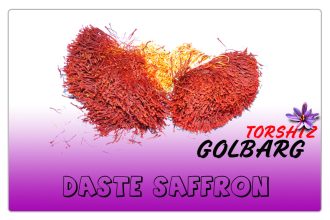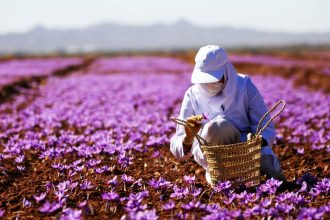In general
 Even if saffron is an expensive spice known as red gold, growing it is however very simple and accessible to anyone. Its price depends on the intense labour needed to harvest it, not because it is difficult to grow. Saffron can grow nearly anywhere in the world. The kind of soil is far more important than the climate of the region where one wants to grow it. Vegetation cycle Planting: from June to mid-September Flowering: throughout October month, from the year it is planted (for big corms) Vegetative development in winter Leaves dry out in May.
Even if saffron is an expensive spice known as red gold, growing it is however very simple and accessible to anyone. Its price depends on the intense labour needed to harvest it, not because it is difficult to grow. Saffron can grow nearly anywhere in the world. The kind of soil is far more important than the climate of the region where one wants to grow it. Vegetation cycle Planting: from June to mid-September Flowering: throughout October month, from the year it is planted (for big corms) Vegetative development in winter Leaves dry out in May.
Soil and location
Saffron corms like a well drained soil. Heavy clay soil must be avoided. The ideal type of ground is a neutral clay-calcareous or silty soil (PH 6 to 8). For small areas like a vegetable garden or simple borders, one can easily improve the soil by adding sand, peat or compost. The saffron bed must be in a sunny place, notably in autumn during the flowering stage.
Soil preparation
In order to prepare the ground, you can either turn the soil over or plough deeply (about 20 cm) and add some compost or manure. In the case of nitrogenous fertilizer, it is better to spread on the surface after planting.
Keep the ground weed free until planting (from June to September) and make loosen the soil before planting the corms.
Setting out the saffron bed
Saffron corms can either be planted directly into the ground (borders, gardens, fields etc…) or in pots or window boxes (inside or out).
Put the corms into the ground at a 10 to 15 cm depth leaving a 10 cm gap between them.
Watering is not necessary. In case of severe drought in September, watering them once will usually be enough.
Corms multiply from one year to the next, from one corm one can get 5 corms after 3 years.
Precautions
Precautions against predators
Wood mice and voles are particularly fond of corms in winter as well as in summer. Destroying their tunnels regularly allows one to limit their number.
Rabbits, which are particularly keen on leaves and flowers can only be stopped with a secure fence.
Avoiding diseases
Three fungal infections can harm saffron:
Rhizoctonia crocorum – causes brown ulceration and damping-off.
Fusarium – attacks the corm and leaves an orange-coloured band on the limit of the healthy parts.
Violet root rot – produces a damp rot. It is highly contagious; illness also called “mort du safran” (saffron’s death)
All these diseases resist most fungicides, however, they mainly appear from the third or fourth years. Consequently, one should dig up corms and replant them in another field.
It is better not to use the same field again for 10 years.








